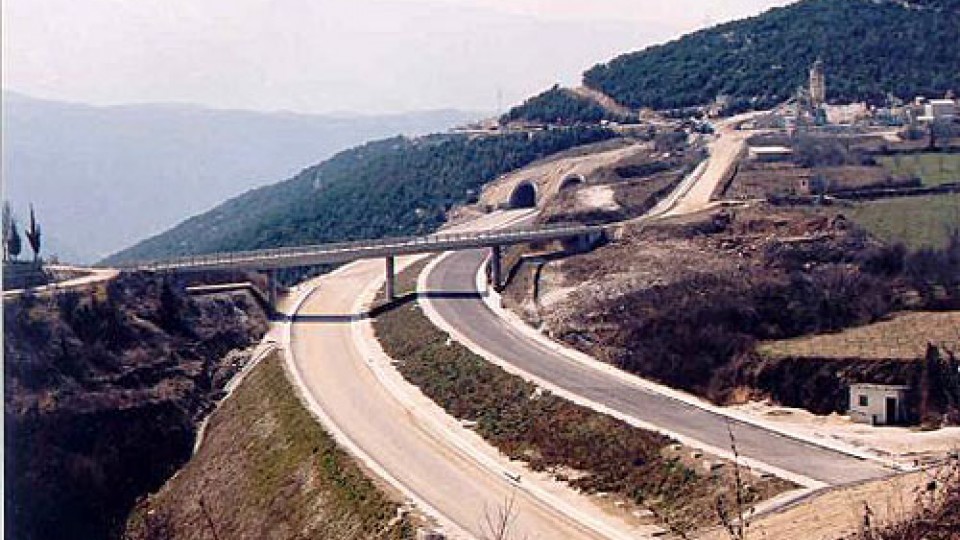Monitoraggio frana in località Molunghi

Studio e monitoraggio della frana di Molunghi Il progetto di monitoraggio della frana di Molunghi è stato svolto in collaborazione tra il Comune di Calice al Cornoviglio ed il Servizio Viabilità della Provincia della Spezia ed è iniziato a seguito del dissesto che ha colpito la strada provinciale e parte dell’abitato di Molunghi di Mezzo […]
Cleaning-up project of Panama City and Bay

The cleaning-up project of Panama City and Bay includes: Construction of Health Service networks Construction and rehabilitation of Collectors and Drive lines Interceptor system Plant for wastewater treatment. These elements will be developed to collect, transport and treat wastewater of Panama City which is currently discharged directly into the bay or rivers and streams in […]
FAQ#118 – È possibile utilizzare la lettura di riferimento (lettura zero) rilevata con una sonda inclinometrica digitale come lettura di riferimento per un’altra sonda inclinometrica digitale?
No, non è possibile.Sisgeo calibra singolarmente ogni sonda, ma ogni sonda ha le sue piccole diverse proprietà, che hanno una piccola influenza sulle letture. Lo standard internazionale ISO 18674-3, nel descrivere la lettura di riferimento, afferma che:“È buona norma effettuare una misura di riferimento aggiuntiva con una sonda indipendente che possa essere utilizzata come backup”.La […]
FAQ#111 – Why I cannot read correctly my 4-20mA current loop gauge?
It could be a problem connected to the power supply given by the readout or logger. When the power supply is in the current loop (2-wire gauge) it is necessary to consider the effect of voltage drop across the shunt resistor on the voltage applied to the gauge. For example, suppose a 4-20mA gauge requires […]
FAQ#075 – What parameters are saved in SISGEO digital sensors? What information must the Customer provide when ordering?
All SISGEO digital sensors (e.g. IPI, BH Profile, MD Profile, LT Inclibus, Tilt-meter, RDS, H-Level, etc.) use the Modbus communication protocol over RS-485 serial. SISGEO digital sensors are connected to each other with a single signal cable. The parameters that are configured at the factory for each digital sensor are as follows: Upon confirmation of […]
FAQ#074 – Che tipo di acquisitore è necessario per leggere i sensori digitalizzati SISGEO?
Per leggere i sensori digitalizzati SISGEO è necessario utilizzare un datalogger Modbus Master (es. OMNIAlog e miniOMNIAlog). I sensori sono letti mediante il cavo connesso ad un interfaccia RS-485 (DCE, Half-Duplex, no Echo) in grado di gestire il protocollo Modbus RTU SISGEO. La documentazione del protocollo Modbus SISGEO vi è disponibile sul sito SISGEO. E’ […]
Egnatia Odos Road – Athens, Greece

Egnatia Motorway was designed to the specifications of the Trans-European road network. Across Epirus and Northern Greece from Igoumenitsa to Evros, Egnatia Motorway is one of the largest road construction projects in Europe, 670 kilometres long and 24.5 metres wide.The realisation of this motorway requires the construction of: 50 road interchanges; 350 entrance / exit […]
FAQ#073 – Qual è il numero massimo di sensori digitalizzati (RS-485, modbus), il numero massimo di catene e la distanza massima del cavo di collegamento in una rete RS-485?
Ultimo aggiornamento: ottobre 2021 Tutti i sensori digitalizzati SISGEO utilizzano il una interfaccia RS485 con protocollo Modbus. 1. Il numero massimo di sensori digitalizzati in una rete RS-485 è 247 (teorico). 2. Il numero massimo di catene di sensori digitalizzati collegabili ad un Modbus master (OMNIAlog e miniOMNIAlog) è 4. 3. Per le distanze massime […]
FAQ#038 – E’ necessario collegare il TEL-310S alla rete elettrica prima della configurazione?
Nel caso il TEL-310S venga immagazzinata per un periodo superiore a due mesi, SISGEO suggerisce di alimentare il sistema per almeno 8 ore prima di configuralo ed iniziare le letture; questo per ricaricare la batteria di backup che, se completamente scarica, potrebbe impedire il corretto funzionamento del sistema.
FAQ#036 – Which is the right mix for inclinometer casing grouting?
There is not an exact ratio for each kind of soil. It depends from many factors that could change for every geological and geotechnical situation. Anyway the grouting should be similar to the soil even if is not really possible to match both characteristics. Approximate Cement/Water/Bentonite mix ratio are: – for hard and medium soil: […]
FAQ#032 – Which is the reading method of the new generation of SISGEO vibrating wire readouts and loggers?
For VW sensors Sisgeo has developed automatic algorithms to search for the resonant frequency in case of environmental noise or poor signal. In this way you can distinguish between the natural frequency of the sensor and the frequency of the noise, thereby reducing measurement errors and false alarms. This method also provides improvement in the […]
FAQ#026 – What can we do when the inclinometer casing ‘float’ during installation?
If the water filled casing is lighter than grout backfill the uplift force of grout varies with the height of the grout column. If the column is short, the uplift force is low and the casing can be held in place by its own weight or with very little down-force applied from the top. When […]








